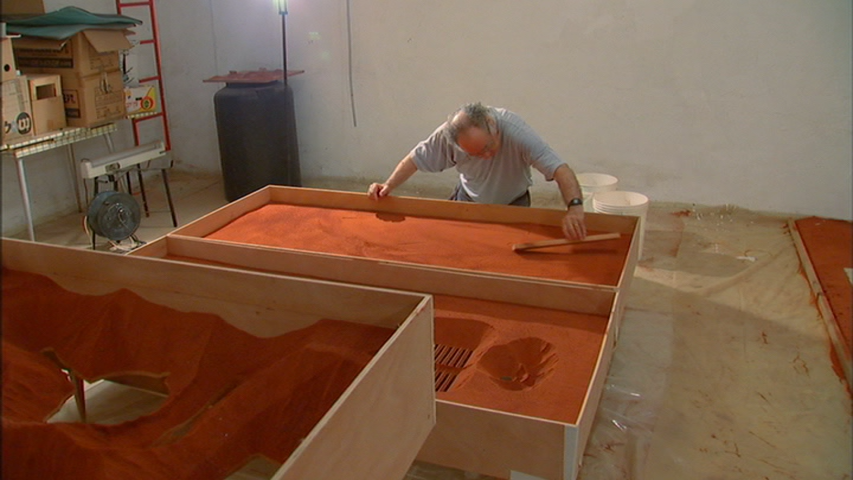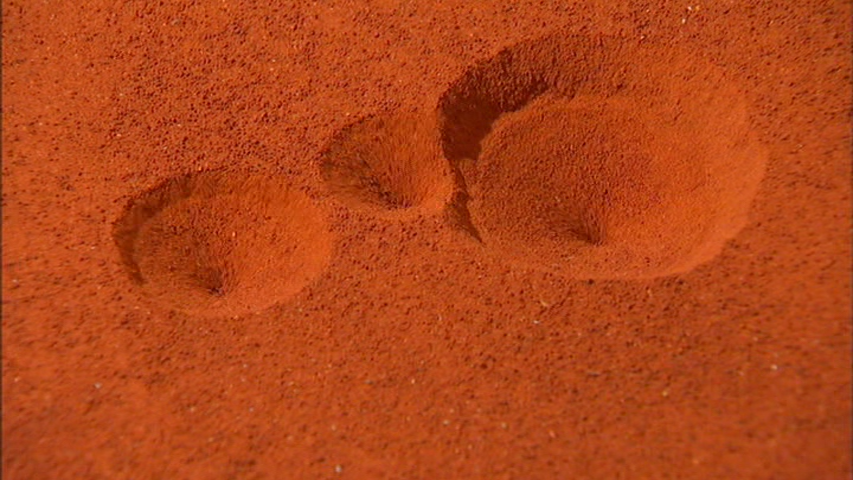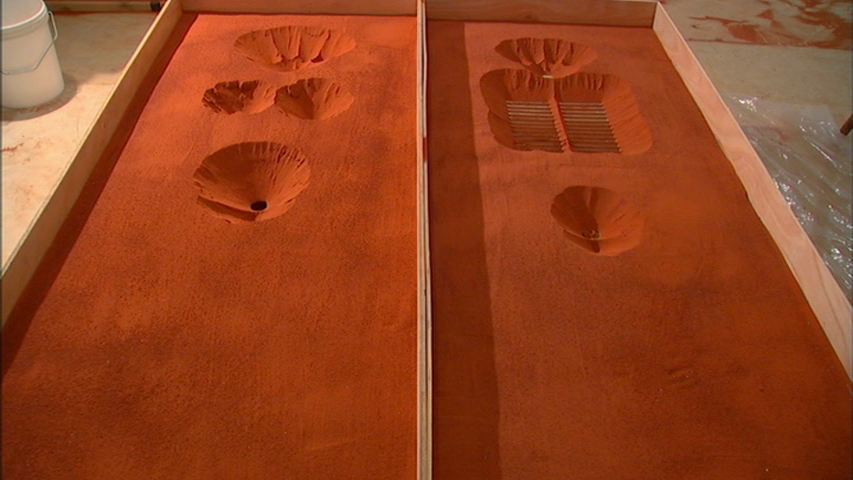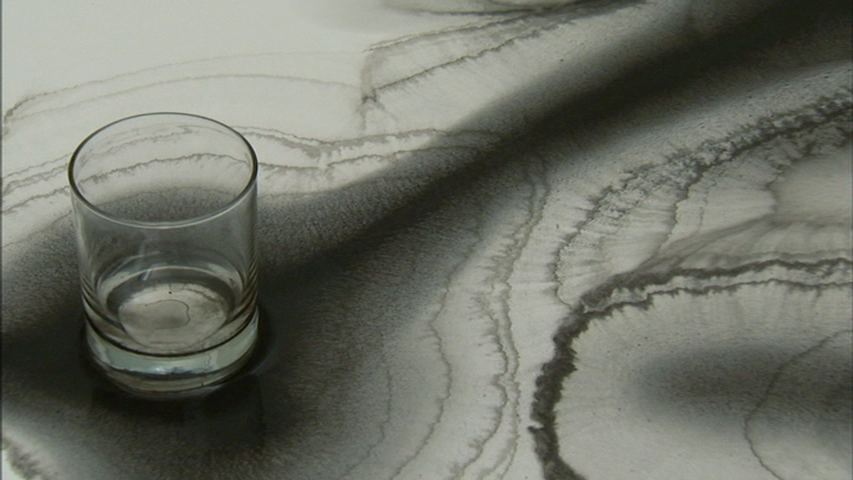Sculptor Micha Ullman. Still from the film Out in the World.
“I am interested in the level of our shoe soles—and below,” says sculptor Micha Ullman. He is speaking both metaphorically and literally. Some of his work has been dubbed “subterranean sculpture”—as with his 1995 Bibliothek (Library), located beneath Berlin’s Bebelplatz, the infamous site of Nazi book burnings in 1933. The work is an underground room filled with nothing but walls of empty shelves: a library without books, visible only by looking downward through a pavement-level window set into the cobblestone square. Visitors pause and consider, remember, mourn.
“What is full and what is empty, earth and air, matter and spirit . . . where does one thing end and another begin?”
Sand—often the orange-red sand of the Sharon area north of Tel Aviv, where Ullman lives—has been a staple medium of his for many years; it provides, he says, a kind of language for him. At Sands of Time, Ullman’s 2011 retrospective at Jerusalem’s Israel Museum (for which we see him preparing in the film Out in the World), the floors were dotted with heavy minimalist iron structures coated with rust-colored sand.
Ullman’s works are as silent as history: viewers bring to them what interpretations they will. There is a deceptive simplicity to his sculptures, which contend with basic human relations or derive from everyday elements: a chair, a television, a book, a camera, a table. As in life, the meanings are never clear—except perhaps for the idea that there is duality in all things. “For me,” he says, “a pit is above all a question regarding the relationship between what is full and what is empty, earth and air, matter and spirit . . . where does one thing end and another begin?” The concave and convex are integrally connected, of course. “I look for good in evil,” says Ullman, “for the sky in a pit.”
These stills are from the film Out in the World, available with the purchase of The Desert and the Cities Sing: Discovering Today’s Israel.






